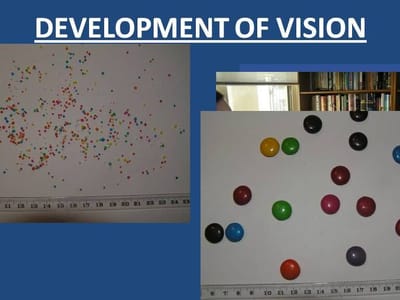preverbal
- Preverbal children:
At 2-4 weeks an infant will fixate and follow a light.
By 5-6 weeks a large object will be followed.
By 5-6 months small objects will receive attention. Small toys, attractive objects, (Smarties or 100s & 1000s) may be used to determine visual responses.
Preference of fixation with one eye is an indication of better vision in that eye. A strabismic patient will alternate the fixing eye if vision is equal.
If no response is obtained subjectively vision can be assessed objectively Objective assessment of Vision
return to previous page



